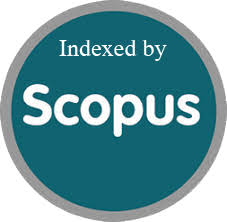Evaluating the Efficacy of Shear Connectors in H Steel Sections Embedded in Concrete
Abstract
This study is focusing on H steel sections embedded in concrete by evaluating various shear connectors, including headed studs, bolts, steel angles, perfobonds, and self-connected variants. This comprehensive examination of nine specimens aims to understand their load-bearing capacity, failure mechanisms, and overall performance in structural composite connections. The paper thoroughly compares and analyzes the load-slip curves, average initial shear stiffness, ultimate load, ductility, and fracture energy for these connectors. The research highlights self-connected connectors with rebars passing through flanges demonstrating substantial increases in ultimate load (41 %) in comparison to natural bond only, and maintaining ductility post-peak. Moreover, through this study it has been found that when shear studs and shear angles are designed for equivalent loads exhibit remarkably similar performance. Additionally, adding extra connectors to the web of H-sections enhances load capacity and stiffness but reduces ductility. The double shear in 10 mm diameter 8.8 bolted (with two nuts inside and outside flange) connectors raise the ultimate load but shift the curve of load slip from ductile to brittle in comparison with the same diameter studs.
References
- . Pallars and J. Hajjar, Headed steel stud anchors in composite structures, Part I: Shear, J. Constr. Steel Res., vol. 66, no. 2, pp. 198212, 2010, http://www.sciencedirect.com/science/article/ pii/S0143974X09002077
- American Association of State Highway and Transportation Officials, AASHTO RFD Bridge Design Specifications, 2017, p. 254.
- American Institute of Steel Construction, AISC, Specification for Structural Steel Buildings, pp. 1612, 2010.
- B. S. En, Eurocode 2: Design of concrete structures Part 1-1: General rules and rules for buildings, Eur. Comm. Stand., 2004.
- B. W. Charles Roeder, R. Chmielowski, A. Member, C. B. Brown, and H. Member, SHEAR CONNECTOR REQUIREMENTS FOR EMBEDDED STEE SECTIONS, Eng. Struct., vol.125, pp.142-151,1999.
- D. S. Jung, S. H. Park, T. H. Kim, J. W. Han, and C. Y. Kim, Demountable Bolted Shear Connector for Easy Deconstruction and Reconstruction of Concrete Slabs in SteelConcrete Bridges, Appl. Sci., vol. 12, no. 3, 2022, doi: 10.3390/app12031508.
- F. Yang, Y. iu, Z. Jiang, and H. Xin, Shear performance of a novel demountable steel-concrete bolted connector under static push-out tests, Eng. Struct., vol. 160, pp. 133146, Apr. 2018, doi: 10.1016/j.engstruct.2018.01.005.
- F. Yang, Y. Liu, H. Xin, and M. Veljkovic, Fracture simulation of a demountable steel-concrete bolted connector in push-out tests, Eng. Struct., vol. 239, no. April, p. 112305, 2021, doi: 10.1016/j.engstruct.2021.112305.
- H. Meng, W. Wang, and R. Xu, Analytical model for the Load-Slip behavior of headed stud shear connectors, Eng. Struct., vol. 252, p. 113631, 2022.
- Iraqi Standard Specification I.Q.S, Portland Cement, no. 5, 2010.
- Iraqi Standard Specification I.Q.S, The Aggregate of Natural Source Used in Concrete, no. 45, 2010.
- J. Guo, Q. Shi, G. Ma, and T. i, Shear Behavior of Superposed Perfobond Connectors Considering ateral Constraints, Appl. Sci., vol. 12, no. 6, Mar. 2022, doi: 10.3390/app12063162.
- J. Wei, Q. Yang, Y. Yu, Q. Wang, L. Zhou, and F. Chen, Study of BondSlip Behavior and Constitutive Model of a New M-Section Steel-Skeleton Concrete, Materials (Basel)., vol. 15, no. 19, pp. 126, 2022, doi: 10.3390/ma15196776.
- P. Duratna, J. Bujnak, A. Bouchair, and F. Bahleda, Behaviour and strength of headed shear stud connectors, Commun. - Sci. Lett. Univ. ilina, vol. 15, no. 3, pp. 107111, 2013, doi: 10.26552/com.c.2013.3.107-111.
- Q. Zhang, D. Jia, Y. Bao, Z. Cheng, Y. Bu, and Q. i, Analytical Study on Internal Force Transfer of Perfobond Rib Shear Connector Group Using a Nonlinear Spring Model, J. Bridg. Eng., vol. 22, no. 10, pp. 111, 2017, doi: 10.1061/(asce)be.1943-5592.0001123.
- R. T. Pardeshi and Y. D. Patil, Review of Various Shear Connectors in Composite Structures, Adv. Steel Constr., vol. 17, no. 4, pp. 394402, 2021, doi: 10.18057/IJASC.2021.17.4.8.
- S. R. Hicks, J. Cao, C. McKenzie, M. Chowdhury, and R. Kaufusi, Evaluation of shear connectors in composite bridges, Wellington 6141, New Zealand, 2016.
- T. Hosaka, K. Mitsuki, H. Hiragi, Y. Ushijima, Y. Tachibana, and H. Watanabe, An experimental study on shear characteristics of perfobond strip and its rational strength equations, J. Struct. Eng. JSCE, vol. 46, pp. 15931604, 2000.
- V. Jayanthi and U. Gunasekaran, Performance Evaluation of Different Types of Shear Connectors in SteelConcrete Composite Construction, Arch. Civ. Eng., vol. 64, pp. 97110, 2018, doi: 10.2478/ace-2018-0019.
- X. Wang, Y. iu, Y. i, Y. u, and X. i, Bond behavior and shear transfer of steel section-concrete interface with studs: Testing and modeling, Constr. Build. Mater., vol. 264, Dec. 2020, doi: 10.1016/j.conbuildmat.2020.120251.
- X. Wang, Y. iu, Y. u, and X. i, Shear transfer mechanism of perforated web connection for concrete encased steel structures, Eng. Struct., vol. 252, p. 113418, 2022.
- Z. Chen, Experimental study of shear capacity of perfobond connector, vol. 29, no. 12, pp. 349354, 2012.








